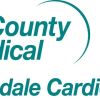Understanding Heart Disease and Its Impact on Women's Health
- 1. The Prevalence of Heart Disease in Women
- 2. Unique Risk Factors for Heart Disease in Women
- 3. Recognizing the Symptoms of Heart Disease in Women
- 4. Preventing and Managing Heart Disease in Women
- 5. Real-Life Stories: Women’s Heart Health Journeys
- 6. Steps to Take Toward Better Heart Health
Heart disease is often thought of as a condition that predominantly affects men, but in reality, it is the leading cause of death for women globally. Many women are unaware of the serious risks that heart disease poses to their health, often because the symptoms and risks can differ significantly from those typically seen in men. As awareness about heart disease in women grows, it becomes clear that understanding the unique challenges women face is crucial in managing and preventing heart disease effectively.
In fact, heart disease kills more women than all cancers combined, yet it remains underrecognized and undertreated in women. Women often experience heart disease symptoms later in life, typically after menopause, making early diagnosis and proactive prevention even more important. It’s essential to understand how heart disease affects women and to take proactive steps to maintain heart health throughout life.
Unique Risk Factors for Heart Disease in Women
While many of the risk factors for heart disease are the same for both men and women, there are certain risk factors that are unique to women or more pronounced in women. These include hormonal changes, pregnancy-related conditions, and conditions like polycystic ovary syndrome (PCOS).
For example, menopause significantly affects women’s heart health due to the drop in estrogen levels, which plays a protective role in maintaining healthy blood vessels. Additionally, pregnancy complications such as preeclampsia and gestational diabetes can increase a woman’s risk of developing heart disease later in life. Women with a history of these conditions should be particularly vigilant about their cardiovascular health after pregnancy.
Furthermore, women with conditions like PCOS are at an increased risk for cardiovascular diseases due to insulin resistance, high blood pressure, and obesity, all of which are common in women with this condition. It’s important for women to have regular screenings and work with their healthcare providers to manage these risk factors effectively.
Recognizing the Symptoms of Heart Disease in Women
One of the biggest challenges in diagnosing heart disease in women is that the symptoms can be quite different from those experienced by men. While chest pain is often associated with heart attacks, women are more likely to experience subtle symptoms, such as shortness of breath, nausea, lightheadedness, or extreme fatigue.
In fact, many women do not experience the typical “crushing” chest pain associated with heart attacks. Instead, they may feel discomfort in their back, neck, or jaw. This can lead to delays in seeking treatment and, ultimately, worse outcomes. It’s critical for women to be aware of these less obvious symptoms and seek medical attention if they experience any signs of heart trouble, especially if they have risk factors for heart disease.
Preventing and Managing Heart Disease in Women
The good news is that heart disease is largely preventable, and there are several steps women can take to reduce their risk and manage their heart health. Maintaining a healthy lifestyle is the most effective way to prevent heart disease. This includes a balanced diet, regular exercise, and avoiding smoking.
Women should focus on a heart-healthy diet that includes plenty of fruits, vegetables, whole grains, and lean proteins. Limiting the intake of saturated fats, salt, and processed foods is also important for maintaining healthy blood pressure and cholesterol levels.
Exercise is another key component in preventing heart disease. Regular physical activity strengthens the heart and improves circulation. The American Heart Association recommends at least 150 minutes of moderate exercise per week, such as walking, cycling, or swimming, to maintain heart health.
Finally, women should monitor their health regularly, including blood pressure, cholesterol, and blood sugar levels, especially if they have any of the risk factors discussed earlier. Taking medications as prescribed and working with a healthcare provider to manage conditions like diabetes or hypertension can make a significant difference in preventing heart disease.
Real-Life Stories: Women’s Heart Health Journeys
One inspiring story is that of Emily, a 45-year-old woman who was diagnosed with high blood pressure and high cholesterol. After learning about the importance of heart health, Emily made significant changes to her lifestyle by adopting a plant-based diet and committing to regular exercise. Within a few months, she saw improvements in her blood pressure and cholesterol levels, significantly lowering her risk of heart disease. Emily’s story is a testament to how small changes can make a big difference in preventing heart disease.
Another powerful example is Sarah, who suffered from a mild heart attack in her mid-50s. After her recovery, she worked with her doctor to develop a plan to manage her heart health, which included regular screenings, stress management techniques, and a heart-healthy diet. Sarah’s proactive approach allowed her to regain control over her health and significantly reduced her risk of future heart problems.
Steps to Take Toward Better Heart Health
Taking steps to improve heart health begins with education and awareness. Women must understand the unique risks they face and prioritize their cardiovascular health by making lifestyle changes that reduce these risks. Regular check-ups and screenings are essential, and women should not hesitate to seek medical advice if they have concerns about their heart health.
If you’re a woman looking to take charge of your heart health, start by adopting a heart-healthy lifestyle that includes exercise, a balanced diet, and regular medical check-ups. Discuss your risk factors with your healthcare provider, and create a plan to manage or reduce those risks. The sooner you start, the better the outcome will be for your heart health in the future.




















